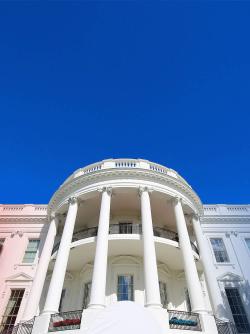A Life of Service
Prince Philip's legacy will leave a lasting mark on the world. What can you learn from it?
“He is someone who doesn’t take easily to compliments but he has, quite simply, been my strength and stay all these years, and I, and his whole family, and this and many other countries, owe him a debt greater than he would ever claim, or we shall ever know.” With these words Her Majesty Queen Elizabeth II honoured her husband, Prince Philip, Duke of Edinburgh, at their golden wedding anniversary in November 1997.
Twenty-four years later, after 73 years of marriage, the duke’s death was not unexpected—yet those words of appreciation and respect ring as true as ever, after a full and remarkable life of service and selfless support to his wife, the queen. Let us consider the lessons of duty, service, and family that we may learn from his example.
Early Life
Philip was born on the Mediterranean island of Corfu in June 1921 and christened Philippos Schleswig Holstein Sonderburg Glücksburg, a prince of both Greek and Danish royal heritage. He came to England in 1922 as a refugee, rescued by a Royal Navy frigate after his uncle King Constantine I was forced to abdicate the throne of Greece. Philip’s subsequent childhood was traumatic, as his parents’ marriage collapsed and he was shuttled from one set of relatives to another. Yet he very much came into his own when attending Gordonstoun School in Scotland in 1934. Kurt Hahn, Gordonstoun’s founding headmaster, noted that Philip was universally trusted, liked, and respected, and that he had the greatest sense of service of all the boys in the school. With considerable prescience, he also noted that Philip would need “the exacting demands of a great service to do justice to himself” (The Telegraph). And so it was to be.
When World War II arrived in 1939, Philip was age 18 and training at the Royal Naval College, Dartmouth; he later became the youngest first lieutenant in the Royal Navy, seeing active service with commendations in the Mediterranean, protecting convoys in the North Sea and with the British Pacific Fleet. He would later be present in Tokyo Bay at the capitulation of the Japanese Imperial Forces in 1945.
Royal Consort
It was while training in Dartmouth that Philip first met his future bride Princess Elizabeth and her sister Margaret. He was five years Elizabeth’s elder, but they were both great-great-grandchildren of Queen Victoria, so Philip was assigned to look after these distant cousins. It was in the subsequent years that the romance blossomed into what became the longest partnership in British royal history. Some objections arose around a Greek-born prince with German connections marrying into the British royal family, but in 1947 Philip took British citizenship and chose his maternal grandparents’ anglicised surname, Mountbatten. Their post-war wedding on November 20, 1947, was celebrated by a 2,500-strong congregation at Westminster Abbey. Afterward, they had a few years of relatively normal family life with the births of Prince Charles and Princess Anne, and a naval posting to Malta.
In 1952, King George VI died at age 56, and Prince Philip—a few days into a visit to Kenya—had to inform his young wife of her father’s death. The destiny of the princess, now Queen Elizabeth II, had arrived sooner than she likely ever imagined. Her coronation and anointing, setting her apart for her high office, took place on June 2, 1953, and at the prince’s insistence was the first to be televised. Prince Philip’s role was to swear allegiance to his wife of five years as she was crowned queen; she now embodied the roles of head of state for the United Kingdom and other nations, head of the Commonwealth, and supreme governor of the Church of England. In performing this act, Prince Philip gave up a very promising naval career and made the choice to support Queen Elizabeth (“Lilibet” to him) in a remarkable way as her consort, always a few steps behind her. Yet no one would ever doubt his leadership within the family. His wry sense of humour would often encourage the queen to smile, and his relaxed demeanour helped her engage with people. This was contrasted by his forthright presence—and, on occasion, his outspoken nature—which did not suffer fools gladly, if at all.
Philip became a champion of many causes in British sport, science, and industry, attending more than 300 solo engagements per year. He was also an accomplished artist, polo player, and (horse-drawn) carriage driver, and a manager of the Royal Estates. In 1956, he founded the Duke of Edinburgh Award Scheme for young people, encouraging self-sufficiency, teamwork, and leadership skills; it has since reached 5 million individuals in 140 countries (see “Character and the Duke of Edinburgh Award” in the September-October 2017 issue of Tomorrow’s World). He was a serious and genuine conservationist in the 1950s when it was not a fashionable thing to be, forming the World Wildlife Fund in 1961 and serving as the charity’s president.
Monarchy’s Future
The majority of British and Commonwealth citizens have known no other royal couple reigning over them. They have been a constant presence, steady and stalwart in the face of international and national changes, including the last 14 U.K. prime ministers and U.S. presidents. An April 10 Telegraph article expressed the impact Prince Philip had on so many people: “The Duke was such an important, colourful part of British life, a man of such indomitable spirit, that many felt they really did know him and will find it hard to imagine public life without him” (“In Prince Philip, the nation mourns a man of character, humour and principle”).
The Telegraph also posed an important question for us to consider, not just about Prince Philip’s life but about the future of the British monarchy: “As we look back at this remarkable life, and learn more about this remarkable man, it is impossible to avoid the realisation that we are marking, if not the end, then the beginning of the end, of an era” (“Prince Philip gave old institutions new life. We must now do the same,” April 11, 2021). The era coming to an inevitable close in the next few years is what we might call the second Elizabethan era. Queen Elizabeth I, a distant relative of the queen, reigned from 1558–1603, a golden age for England. During Queen Elizabeth II’s record-breaking reign, she has seen the post-World War II years, a growing Commonwealth of Nations, Britain entering and leaving the European Union, devolution of the constituent nations of the U.K., widespread liberalisation of social mores—and, on a personal level, the breakup of three of their four children’s marriages.
For most of his 72 years of life, Prince Charles has been in training as heir apparent to the British throne, and in recent years has assumed many formal ceremonial roles on behalf of the queen. Some have suggested that he could adopt a modern “Prince Regent” role and take more control over day-to-day royal affairs while the queen remains monarch. Others have suggested that Her Majesty might abdicate following the death of Prince Philip, but royal experts are strongly of the opinion that after a period of mourning she will return to “business as usual.” On her twenty-first birthday, four years before becoming queen, she indicated this would be the case when she said, “I declare before you all that my whole life whether it be long or short shall be devoted to your service and the service of our great imperial family to which we all belong.” She has certainly been stoically faithful to that promise and to her duty for nearly 70 years.
Prince William, Philip’s grandson and second in line to the throne, made a statement on April 12 regarding the Duke of Edinburgh’s service and exceptional life, acknowledging their shared commitment: “I will miss my Grandpa, but I know he would want us to get on with the job…. My grandfather’s century of life was defined by service—to his country and Commonwealth, to his wife and Queen, and to our family” (“Prince Philip: William and Harry pay tribute to grandfather,” BBC.com, April 12, 2021).
Servant Leadership
Prince Philip’s character was one that would normally be associated with a natural tendency to lead rather than serve. However, he chose to lead a life defined by service to others—an admirable quality and one that undoubtedly stemmed from his personal faith. Longtime Tomorrow’s World readers will remember the many times this magazine’s founder, Evangelist Roderick Meredith (1930–2017), wrote about the vital Christ-like quality of servant leadership. In his usual modest way, Prince Philip would not have claimed to be a particularly good example of this, but vital aspects of his life might indicate otherwise.
He came from a generation with a solid work ethic and a determination to “keep calm and carry on” no matter what life brought one’s way. He had a sense of personal responsibility to the wider community and sought to make the world a better place for everyone. His effective style of leadership was not primarily focused upon charm and charisma, although he had a good dose of both. He exhibited a quality of calm confidence and humility in his servant leadership—a trait modern leadership models are increasingly recognizing. For example, Dr. Ryne Sherman, the chief science officer of a company that designs workplace personality tests, has observed, “Humble leaders can also be highly competitive and ambitious. But they tend to avoid the spotlight and give credit to their teams…. They also ask for help and listen to feedback from others, setting an example that causes subordinates to do the same” (“The Best Bosses Are Humble Bosses,” WSJ.com, October 19, 2018).
Far too few would acknowledge that these realisations echo priceless counsel found in the pages of your Bible. Both King Solomon and Jesus Christ recognized that service with humility brings honour (Proverbs 29:23; Matthew 23:11–12). Jesus taught and lived a life of servant leadership (Matthew 20:20–28), identifying this as a biblical characteristic of truly godly leaders. He encouraged His disciples, including those He is calling today, to exemplify the same quality, urging that “whoever desires to become great among you, let him be your servant… just as the Son of Man did not come to be served, but to serve, and to give His life a ransom for many” (Matthew 20:26, 28).
Her Majesty Queen Elizabeth undoubtedly feels the continued call to duty and service she has had all her adult life, to get on with the job—but now, sadly, without her “strength and stay” of 73 years. It will be a challenging transition for her, as she mourns Prince Philip’s death in her ninety-sixth year of life as the longest-living, longest-reigning British monarch.
Prince Philip leaves behind a remarkable legacy. Perhaps more than anyone else he ensured the extraordinary success of the queen’s reign by forging a highly successful and harmonious partnership with his wife. This was his lifelong goal—to create a marital bond that would provide the strength to withstand the shocks of life and accomplish good for others. Representing Britain into their nineties, the queen and her “strength and stay” contributed to a kind of golden age of stability in today’s fast-changing world.






